Preventive Practice on Earthquake Preparedness Among Higher Level Students of Dhaka City
Introduction
Disaster is a very common phenomenon to the human society. The disaster had been taking place in human society before the evolution of the mankind. And the disaster has been believed to be having its existence and experience since time immemorial. People are becoming more and more vulnerable to disasters of all types. This includes both natural and man-made. Some of the major disaster includes earthquake, flood, cyclones, landslides, droughts, accidents, forests fire, war etc. With the technological advancements and progress, the force of disasters is also changing. When they occur, they surpass all preparedness and eagerness of society and pose bigger challenge to them. This is quite true in case of both developed and developing countries.
Disaster can be grouped under the following headings:
a. Natural disasters, which can be geophysical (e.g., earthquakes, tsunamis and volcanic eruptions), hydrological (e.g., floods, avalanches), climatologically (e.g., droughts), meteorological (e.g., storms, cyclones), or biological (e.g., epidemics, plagues).
b. Man-made emergencies, such as armed conflicts, plane and train crashes, fires and industrial accidents.
c. Complex emergencies, which often have a combination of natural and man-made elements, and different causes of vulnerability and a combination of factors leads to a humanitarian crisis. Examples include food insecurity, armed conflicts, and displaced populations (Coalition).
Earthquake is a violent tremor in the earth crust, sending out a series of shock and aftershock waves (L waves) in all direction from its focus. Earthquakes constitute one of the most terrible natural hazards which often turn into disaster causing extensive devastation and loss of human lives and their properties. [1] As, we know students or youth are one of the best ways of circulating message among the other which includes the family members. The age group being active enough and to implement themselves into development activities are important especially during humanitarian emergency.
Earthquake in Bangladesh
Bangladesh is called a land of natural disasters because almost every year she is attacked by different kinds of natural disasters. Every year some common natural calamities like floods, cyclones, tidal bores, excessive rainfall, earthquake, and drought visit Bangladesh. Among all the natural calamities, floods and cyclones are most common. It visits, especially in the rainy season. It causes great harm to our agriculture, houses, and properties. However, any kinds of natural calamities cause a heavy loss in our country. Many people are killed, many are lost, and many become homeless. Many cattle die. Many houses collapse. Many fatal diseases like cholera, typhoid, diarrhea etc. break out. Educational institutions, trees and communication systems are damaged due to natural calamity. In a word, natural calamities cause untold sufferings to people. However, we cannot protect natural calamities, but we can take some measures to minimize losses of the victims. We can raise awareness among the people and train them in this regard [2].
Bangladesh is geographically located on a seismically active region and highly vulnerable to earthquakes. Its northern and eastern regions are known for experiencing earthquakes that surpass 5 on the Richter Scale; and cities such as Dhaka, Chittagong and Sylhet are particularly vulnerable as a result of rapid urbanization, poor planning, high population density, and innumerable high rises and buildings that are yet to meet National Building Codes [3]. Bangladesh is one of the most vulnerable countries of the world in terms of natural and anthropogenic hazards, is a low-lying deltaic country covering an area of 147,470 sq. km and supporting about 150 million people with population density of 1033 per km. sq. The geographical setting and meteorological characteristics have made the country vulnerable to different geo-hazards and hydrometrological hazards [4].
Dhaka expanded very quickly due its growing importance as the capital. Buildings were being built on the riverside humus soil in the east and west. In the low-lying areas, they were built using the arching method. These attractive, multi-story buildings were constructed using faulty designs. The bottom floor is a parking space, and they are called soft story buildings. Due to earthquakes or even strong winds, the lateral deflection of the building top caused by the ensuing tremors cannot be resisted due to these large, unobstructed spaces on the bottom floor (known as a soft story collapse). These soft story tall buildings are vulnerable to distant earthquakes. Widespread brick masonry, non-engineered and poorly constructed buildings would be hit worse than ever in the history of Dhaka. The catastrophic picture will be beyond our imagination and could even lead to abandonment of the city [5].
The researchers, however, could not say when the earthquake would occur -- whether it is imminent or would occur after 100 years. The study has found evidence that the northeastern corner of the Indian subcontinent is actively colliding with Asia, potentially posing a major earthquake risk to the region. After using ground and satellite GPS monitors to measure surface activity between 2003 and 2013, an international team of researchers has shown Bangladesh is sitting on a huge subduction zone [6]. A strong earthquake of 6.8 magnitude tremors, with the epicenter in central Myanmar’s Chauk was felt in Dhaka as well on August 2016 leaving high-rise buildings shaken in the cities and leading to panic among citizens [7]. The major earthquakes that have affected Bangladesh since the middle of the last century are the Cachar Earthquake of January 10, 1869, the Bengal Earthquake of July 14, 1885, the Great Earthquake of July 12, 1897, the Srimangal Earthquake of 8th July 1918, the Dhubri Earthquake of July 3, 1930, the Bihar-Nepal Earthquake of January 15, 1934 and the Assam earthquake of August 15, 1950. Of these, only the Bengal Earthquake of 1885 and the Srimangal Earthquake of 1918 had their epicenters in Bangladesh [8]. The earthquake disaster risk index has placed Dhaka among the 20 most vulnerable cities in the world. Dhaka with its population of around 13 million and enormous poorly constructed and dilapidated structures signifies extremely vulnerable conditions for massive loss of lives and property in the event of a moderately large earthquake [5].
Justification of the Study
Dhaka is too much vulnerable of earthquake disaster due to some reasons. First of all, the population density is very high in Dhaka city. Secondly, it is predicted that the secondary hazard like fire break out from gas and electricity line will have more disastrous impact after earthquake. Thirdly, not only building codes are not maintain during construction time of most of the high-rise apartment buildings and most garment factory buildings but also they have been constructed without open spaces and most have encroached upon the streets and roadways [9]. A powerful earthquake occurred in Nepal on 25th April 2015 where the tremors were also felt in other South East Asian countries including Bangladesh, India and China. Bangladesh was jolted twice by tremors and, although the tremor was not as severe, it was reported to be between 4 and 5 on the Richter scale. In Bangladesh, six lives were lost, and more than 200 people were injured and were taken to hospital. There were also many buildings that collapsed in the mega city Dhaka and its surrounding areas. This experience and the lessons learnt highlight the importance for national earthquakeproof building regulations and systems to lessen the damage and devastation of any future earthquake [10].
Method and Materials
The Descriptive Cross-sectional study was carried out for the duration of 6 months (December 2016 – May 2017) which the study sample was from Mirpur Cantonment Public School and College, (11 and 12 class). As the institution have good flow of students and the students there were capable of reading and understanding English language easily. Semi-structured both open ended and close ended questionnaire was used for this study. The sample was calculated from the formula.
n= (Z^2*p*q) / d^2
Due to time constrain the sample of 115.
Ethical Considerations
The required permission was taken by the Ethical Review Committee of American International University-Bangladesh (AIUB) to conduct the research. Also, Prior Permission from concerned Authorities was received for conducting study in their premises.
Results and Findings
The study was done with 115 participants; 56 (48.7%) were male and 59 (51.9%) were female. Most of the respondents were of the 17 years (Figure 1). Most of the respondents followed Islam religion 111 (97%) and only few respondents were Hindu 4(3%). Majority had their home was in residential area 70 (60.9%) and about 41 (35.7%) had their in commercial area and 4 (3.5%) near to the industrial area. Out of 115 respondent 64 (55.7%) answered they have experience or witnessed the disaster in their locality. Whereas 51 (44.3%) mentioned they have not yet experienced or heard of the disaster. Out of that 64 (55.7%) respondent, 29 (45.5%) of the respondent answered that they have witnessed flood in their locality. Similarly, 19 (29.6%) mentioned that they have experienced earthquake. Out of which only 7 (11%) said that they have experienced witness cyclone. Only, 4 (6.2%) of them answered heavy rainfall. Whereas few i.e., 2 (3.1%) of them answered building collapse as the disaster they heard or knew in their locality.
All the respondents 115 (100%) of the respondent has heard about the Earthquake. Out of 115 respondent 89 (77.4%) respondents said that they have heard the term disaster preparedness. Only, 111 (96.5%) of the respondents answered that they know about the cause of earthquake. Out of those 111(96.5%), 80 (69.6%) respondents said that the main cause of the earthquake if movements of the plates. Likewise, 30 (26.1%) of the respondent answered natural occurrence and 3 (2.6%) of the respondent don’t know about the cause. Out of 115 respondents, 41 (35.7%) respondent said unsecured heavy items falling being the main reason for the death of the people at the time of earthquake.
Likewise, 31 (27%) of the respondent answered all of the given options i.e., unsecured heavy items falling, being buried, shattered window, loose opening electric wires, collapsing wall/ceiling. And 14 (12.2%) of them answered collapsing wall/ceiling as the reason. The least answered was a shattered window 2 (1.7%). And 8 (7%) of the people answered that they don’t know. 115 (100%) of the respondent has received the information about the earthquake. Source of the information on earthquake was mainly the school curriculum 40 (35.7%). 37 (33.9%) respondent all the mentioned for the source of information about the earthquake. And 16 (14%) received information Internet. The least was 1% which was from the community-based program (Figure 2). About 45 (39%) of the respondent answered death as the main hazards that could be seen after the Earthquake followed by cut injuries/wound by 33 (29%). The least 3 (2%) did not know about it (Figure 3). Respondents were asked about the disease that are likely to be seen after earthquake, 50 (43.5%) of them have answered water borne disease. Followed by 31 (27%) non-communicable disease, 21 (18.3%) of the respondent answered that they do not know about the situation on what disease could be seen after the earthquake. And 3 (2.6%) respondents have answered STI. We can say that they do not have much knowledge regarding the disease after the earthquake. (Figure 4).
Out of 115 respondents, 55 (48%) has answered beam and pillar, 42 (36.5%) under the bed/Table as the safest place to be at the time of earthquake. Apart from the measure some 5 (4%) answered that they would pray to God at the time of earthquake. Likewise, 17 (15%) of them have answered that they would move to open area for the preventive practices. 23 (20%) preferred to stay in the same place (Figure 5). Out of those 115 respondents 39 (34%) of the total respondent has made the go bag. In which, only 29 (26.1%) of the respondent answered correctly i.e., first Aid, water, torch, dried foods etc to be kept in the Go bag. Whereas 5 (4.3%) of them answered incorrect i.e., they answered clothes or only helmet as an essential thing that needs to be kept in the Go bag. And only 2 (1.7%) of the respondent had answered only first aid as the most important things to be kept in the go bag. 100% of the respondent’s covered Disaster in their curriculum.
Calculation of Knowledge Score
The knowledge score has been calculated by the formula Mean + S.D. And all the right answer to the knowledge related variables were given 1 mark, similarly to all the wrong ones were given 0. From which the total knowledge score has been calculated. 80 (69.6%) of the respondent have an average knowledge, 15 (13%) have poor knowledge score. Only 20 (17.4%) of the respondent had the good knowledge level on the earthquake and its preparedness. With the findings we can say that majority of the respondents have average knowledge regarding earthquake and its preventive measure. Still, many respondents lack basic information on earthquake and its preparedness (Table 1). Similar calculation was done for the practice as well, by using the formula Mean + S.D. giving right answer 1 mark and wrong ones 0. Out of 115, 90 (78.3%) of the respondent has the average practice regarding the earthquake preparedness. Similarly, 8 (7%) respondents had poor practice and only 17 (14.8%) respondents had good practice level out of 115 respondents (Table 2).
Table 2: Practice Score on the earthquake preventive measure of the higher secondary level students.
The association of the knowledge about the earthquake and the preventive practices of the earthquake among the higher secondary level’s students were done in above table. Where, from the table above we can clearly see that the respondents who had good knowledge had poor practice i.e., 50 (43%) out of 115 respondents. Similarly, 50 (43%) of the respondents had good knowledge and good practice as well. In the other hand, the respondents with poor knowledge i.e., 8 of the respondents had poor practice but 7 of the respondents had good practice disregarding they fall under the poor knowledge. From the above table it is clearly seen that the good knowledge is higher, but the practice seems poor among the respondents. The above table is the association of the knowledge of the earthquake and practice score of the preventive practices of the respondent. The chi-square has been done to see the association of the knowledge and practice.
Where,
Pearson’s Chi-square ‘P’ value (P) = 0.810
The minimum expected outcome is 7.43.
From the above table we can understand there is no association between Knowledge and practice in regard to earthquake. For the association between knowledge and practice about the earthquake among the higher secondary level students, ‘P’ value was 0.810. i.e., it is not significant. We can say knowledge and practice do not have any association. For association P value should be smaller than 0.05 i.e. (P < 0.05). But here, 0.810 > 0.05. So, we can say that knowledge and practice are not associated. Here, we can also say that the knowledge about the earthquake and the preventive practice on the earthquake among the higher secondary level students of Dhaka city is not associated (Tables 3-6).
Table 3: Association of Knowledge on earthquake and preventive Practice about the earthquake among higher secondary level students.
Table 4: Chi-square tests of the Knowledge on earthquake and preventive Practice about the earthquake among higher secondary level students.
The association of the knowledge about the earthquake and the gender of the involved participants among the higher secondary level’s students were done in the above table 5. From the table above we can clearly see that the respondents who had good knowledge were mostly females i.e., 56 (48.9%) of the total respondents. Likewise, male had good knowledge with only 44 (38.2%). From the above table 5 it is found that the good knowledge is higher among the female participants than in the male. The above table is the association of the knowledge level about the earthquake and gender of the respondent. The chi-square has been done to see the association of the knowledge and the gender of the respondent. Where, Pearson’s Chi-square ‘P’ value (P) = 0.009, The minimum expected outcome is 7.30. From the above table we can understand there is association between Knowledge and gender of the respondent towards earthquake. For the association between knowledge and gender ‘P’ value was 0.009, i.e., it is significant. We can say knowledge and gender do have association. For association P value should be smaller than 0.05 i.e. (P < 0.05).
Discussion
Earthquake is contingent and unpredicted and can only be dealt by effective disaster management plans. Disaster including earthquake never happened does not mean it can never happen. It can happen at any time and at any moment. The study has aimed at examining the level of knowledge and practice towards earthquake preparedness among higher secondary level students of Dhaka city. The study has been carried out to a small portion of Dhaka City. Dhaka, the capital city of Bangladesh is one of the fast-growing cities in the world. Since its independence, rapid urbanization turned Dhaka as one of the megacities of the world. The rapid growth of Dhaka’s population forced haphazard & unplanned development and speedy construction of new buildings in any and every available space. Due to this, the capital city is now in a serious threat of upcoming massive disaster like earthquake.
In this study the higher secondary student’s knowledge level on earthquake and practice level of the earthquake were analyzed using the chi-square test which after the analysis found not satisfactory. The highest frequency and percentage falls under average score in both knowledge about the earthquake and preventive practice level among the higher secondary level students of the Dhaka city. With that we can say the respondents who are higher level students of age group 16-19 do not have good knowledge on earthquake and practice regarding earthquake and its preparedness. In this study the poor knowledge score was 15 (13%), average 80 (69.6%) and good knowledge score 20 (17.4%) among the 115 respondents.
Out of the 115 respondents most of the respondent has average knowledge and very few 20 (17.4%) has good knowledge about earthquake and the preparedness of it. Similar results were found in the study that was done in India among 540 secondary school teachers in which the teacher’s knowledge was not satisfactory level. In which majority of the teachers 448 (82.96%) had average knowledge, 39 (7.22%) had good knowledge, and 53 (4.26%) had poor knowledge regarding disaster management. It clearly indicates that their gross deficiency in knowledge of disaster management among schoolteachers (India, 2014).
Similarly, results were also found in the study done which was done with 375 undergraduate medical students. Where the findings came out, that undergraduate medical students had little knowledge about disaster and its preparedness (Sinha, 2008). In this study the significant of the knowledge and practice was also done to see and analyze if the knowledge and the practice of the earthquake and its preparedness among the higher-level secondary students are associated or not. For that in this study the cross tabulation of the knowledge score about the earthquake and practice score of was done. To be significant Pearson’s chi square needs to be lesser or equals to 0.05. But in this study, cross tabulation (chisquare) of knowledge and practice of the respondent was done.
Where after the cross tabulation the knowledge and the practice were insignificant towards each other, i.e. 0.89 > 0.05. With the findings of this study, we can say that the knowledge about the earthquake is not significant towards the practice among the higher secondary level students. From the findings it can be said that it is not necessarily needs to be a direct relationship of knowledge level to the practice level.
Similar results were found in the study done among the 540 secondary level students of India. There is gross deficiency observed in relation to knowledge and practices of teachers of the study done in India. The correlation of knowledge and practices of teachers by calculating correlation coefficient (r) between these two parameters were done where it was found moderate correlation. It indicates that knowledge does not bring substantial difference in their practices [11]. Likewise in the crosssectional study that was conducted among 144 nursing educators representing Division of Surgical Nursing, Florence Nightingale Faculty of Nursing, University of Istanbul, and two universities in Miyazaki, Japan showed the similar results. From its finding, regardless of knowledge on disaster preparedness and response, there was no statistical significance on personal preparedness The analysis showed that the education level was not a significant factor for taking precautionary actions against an earthquake (p=0.150) [12].
The knowledge score and the sex of the respondent were cross tabulated to see their significance of knowledge and sex of the respondent i.e., 0.89 > 0.05. The sex was significant to the knowledge level for the earthquake and its preparedness. Similarly, the mean score of female respondents was 20.85 and the male was 18.29 in this study. Which means the knowledge of the female was higher compared to the males. In a way we can say females are higher knowledgeable in terms to male of the higher secondary level students of the study. Similar result was found in the study done in 375 undergraduate medical students where the mean score was 8.77 which was slightly higher in females [13-16].
Conclusion and Recommendation
The knowledge of earthquake and its preparedness among Higher Secondary Student were average. Though they had a good knowledge on disaster, still few students were unable to answer about the preparedness meaning. They knew about the causation about the Earthquake, but few are unaware of the fact if earthquake can ever hit Dhaka city or not. Though the disaster and earthquake knowledge has been provided from the college but still more awareness programmed on earthquake preparedness in school should be carried out focusing on behavioral change of the students.
For more Articles on : https://biomedres01.blogspot.com/
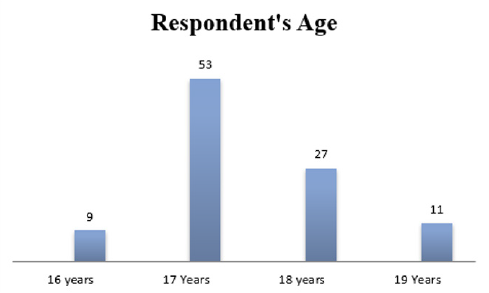
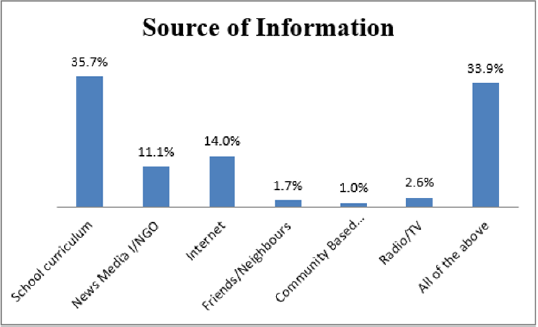
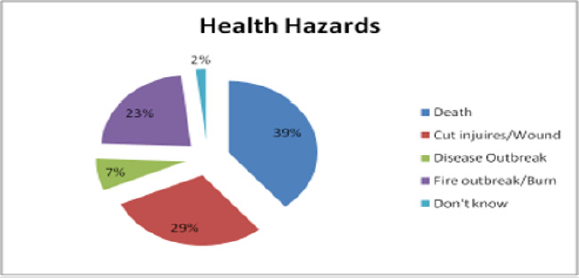
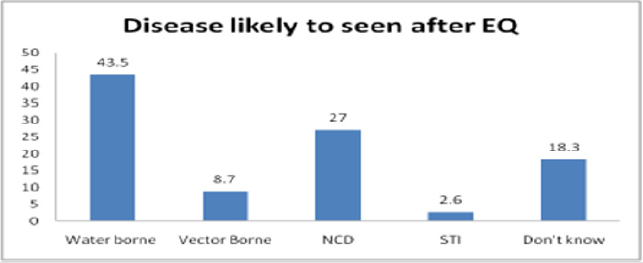
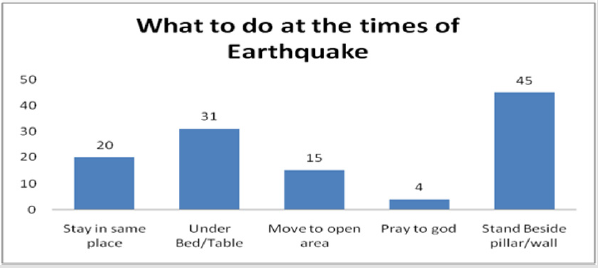








No comments:
Post a Comment
Note: Only a member of this blog may post a comment.